#aquilegia canadensis
Explore tagged Tumblr posts
Text

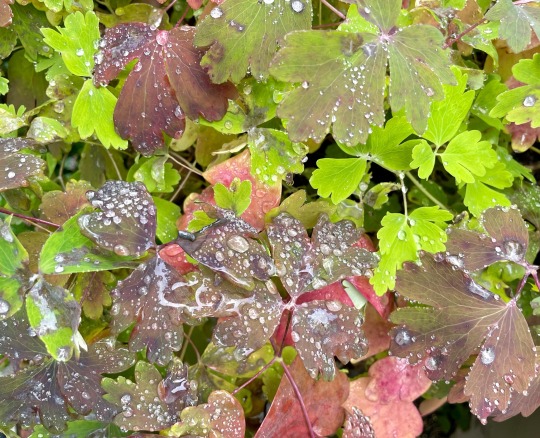
Wild columbine leaves in autumn mode, after rain.
351 notes
·
View notes
Photo
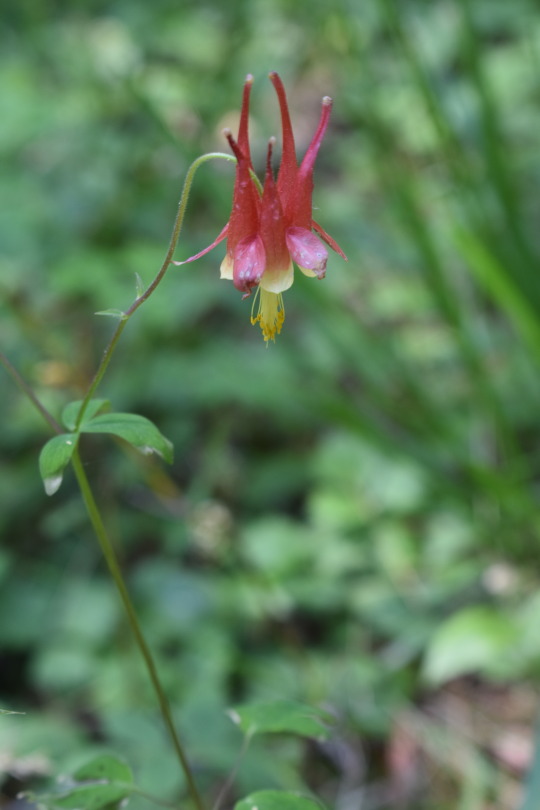
Wild Columbine Aquilegia canadensis Ranunculaceae
Photograph taken on June 20, 2023, at Petroglyphs Provincial Park, Woodview, Ontario, Canada.
#wildflowers of southern ontario#Wild Columbine#Columbine#Aquilegia canadensis#Aquilegia#Ranunculaceae#Petroglyphs Provincial Park#Woodview#Ontario#Canada#red#nature#wildflowers#wildflower#flowers#flower#flora
31 notes
·
View notes
Text

Aquilegia canadensis / Eastern Red Columbine at the Sarah P. Duke Gardens at Duke University in Durham, NC
#Aquilegia canadensis#Aquilegia#ranunculaceae#Eastern red Columbine#Red Columbine#Canadian Columbine#Canada Columbine#Wild Columbine#Columbine#Native plants#Native flowers#Plants#Flowers#Nature photography#photographers on tumblr#Sarah P. Duke Gardens#Duke Gardens#Duke University#Durham#Durham NC#North Carolina
5 notes
·
View notes
Text
My Garden Flowers Part 5
All photos mine. The blue flax is edited for colour since the camera didn't catch it and washed it out. The curlytop smartweed is edited for contrast and the scarlet bee balm is edited for colour since that phone camera sucked.
























In order of appearance:
121. Whorled Milkweed (Asclepias verticillata) Flowering for the first time this year! I hope she gets pollinated.
122. Blue Flax (Linum lewisii) Finally got this thing to flower. She doesn't live very long and my first two attempts grew just fine but didn't flower and therefore didn't reseed. Here's hoping this one does.
123. Lakeside Daisy (Tetraneuris herbacea) Not pictured as she hasn't flowered yet.
124. Fringed Sagebrush (Artemisia frigida) Took me several tries, including the wrong species sent, before I got one to take off but she survived the winter and is doing nicely this summer!
125. Black-Eyed Susan (Rudbeckia hirta) Sadly she didn't make it through the winter and I'll have to try another area, but she certainly looked nice while she was here.
126. Gray-Headed Coneflower (Ratibida pinnata) Flowering for the first time this year! Also my first successful attempt as BOTH my previous plants were cut where I had them. Two in a fucking row. She doesn't even look that weedy. I don't know what the fuck.
127. Narrow-Leaved Vervain (Verbena simplex) Sadly she didn't survive the winter. Trying her in another place and she seems to like it so far.
128. Pink Evening Primrose (Oenothera speciosa) Well, she certainly understood the assignment to prettify that area, though I had no idea she'd spread so much. My other Oenothera species are much more well-behaved. lol
129. Streamside Fleabane (Erigeron glabellus pubescens) Lovely little thing in the small spot I have her in. An ideal small space plant.
130. Green Comet (Asclepias viridiflora) Now she flowered last year but didn't make pods in spite of all the ants who came to visit. Hoping she'll make pods this year!
131. Spike Goldenrod (Solidago simplex) She looked nice here but didn't survive the winter. I'm trying one in another spot.
132. Prairie Dropseed (Sporobolus heterolepis) Not pictured as I haven't got any pictures yet.
133. Blue Leadplant (Amorpha canescens) Not pictured as she hasn't flowered yet.
134. Clammy Groundcherry (Physalis heterophylla) She also spread much more than I expected, but I don't mind. Potentially lots of ground cherries!
135. White Meadowsweet (Spiraea alba) A bit leggy as a bush, though that might be due to where I have her, but the flowers are yet again white and lacy and loved by pollinators.
136. Curlytop Smartweed (Persicaria lapathifolia) I didn't plant that, and wish I had gotten a better photo of her because she sadly never reseeded until this year, and her daughter is not quite as impressive as she was.
137. Slender Mountain Mint (Pycnanthemum tenuifolium) She is no longer with us as of this year and I'm not sure why. I've planted fireweed in that spot now and we'll see how she does. Maybe I'll plant slender mountain mint in the back instead.
138. Fireweed (Chamaenerion angustifolium) Not pictured as she hasn't flowered yet.
139 Michigan Lily (Lilium michiganense) Every year I end up with more! Springtime flower only and then she fruits.
140. Canada Columbine (Aquilegia canadensis) one of the relatively safe members of the buttercup family. You can pop a flower or two into your mouth for a refreshing sweet snack.
141. Prairie Smoke (Geum triflorum) Probably the most showy of her genus. Avens flowers tend to be small white or yellow on leggy stalks, but prairie smoke has red parts around white flowers that eventually become fluffy seedheads, hence the name. Plus the leaves turn red in the fall so very nice all around.
142. Golden Alexanders (Zizia aurea) She can get leggy in the summer, but the bright yellow flowerheads are nice in spring.
143. Canada Wild Rye (Elymus canadensis) She didn't make the winter. Again I think it was too dry. She may have reseeded, however, or else I've let a clump of crabgrass stay for far too long.
144. Purple Prairie Clover (Dalea purpurea) She's another one I had to get from a Manitoba company because no one in Ontario was selling this species (some do now though). She is thriving!
145. Wild Mint (Mentha arvensis) The area I have her in is fairly dry and blocked by sidewalk. She does occasionally get in the cracks but is otherwise well-behaved in her enclosure. The same cannot be said for the one I gave to my friend for her landlady's plant war. Apparently she's taken over the neighbourhood. Well done, native mint.
146. Scarlet Beebalm (Monarda didyma) She lived well for one year in that area and then never again. I'm trying her in a different spot where she hasn't flowered yet but seems to like it.
147. Purple Coneflower (Echinacea purpurea) That's a cultivar. I did eventually manage to get the wild type, but don't have a picture yet.
148. Canada Garlic (Allium canadense) In my humble opinion these are much tastier than ramps. They usually don't make flowers, opting to make bulbs instead, but this was a nice exception. They're springtime only, though.
149. Annual Fleabane (Erigeron annuus) I rescued her from a fallow area. Sadly she didn't reseed but I don't feel bad because that area is completely under development now and her offspring wouldn't have made it anyway. I gave her a chance.
150. Northern Bedstraw (Galium boreale) Not pictured as she hasn't flowered yet.
#blackswallowtailbutterfly#my photos#photography#my garden#garden flowers#native plant gardening#native flowers of Carolinian Canada and USA#Asclepias verticillata#Linum lewisii#Artemisia frigida#Rudbeckia hirta#Ratibida pinnata#Verbena simplex#Oenothera speciosa#Erigeron glabellus pubescens#Asclepias viridiflora#Solidago simplex#Physalis heterophylla#Spiraea alba#Persicaria lapathifolia#Pycnanthemum tenuifolium#Lilium michiganense#Aquilegia canadensis#Geum triflorum#Zizia aurea#Elymus canadensis#Dalea purpurea#Mentha arvensis#Monarda didyma#Echinacea purpurea
6 notes
·
View notes
Photo
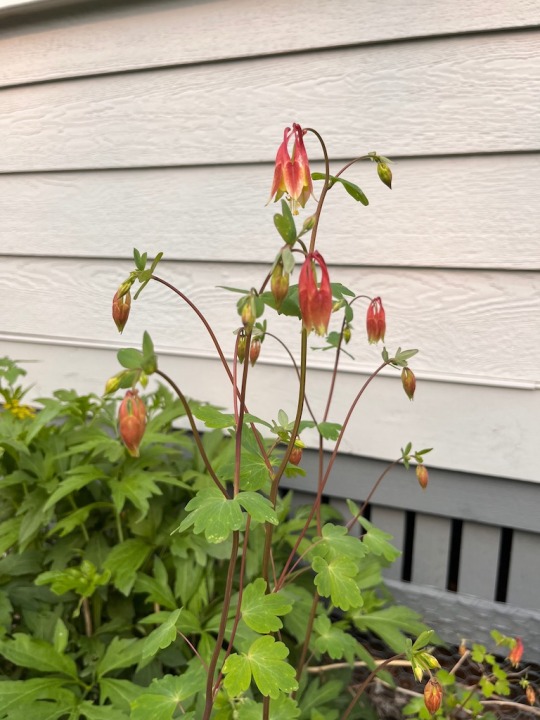
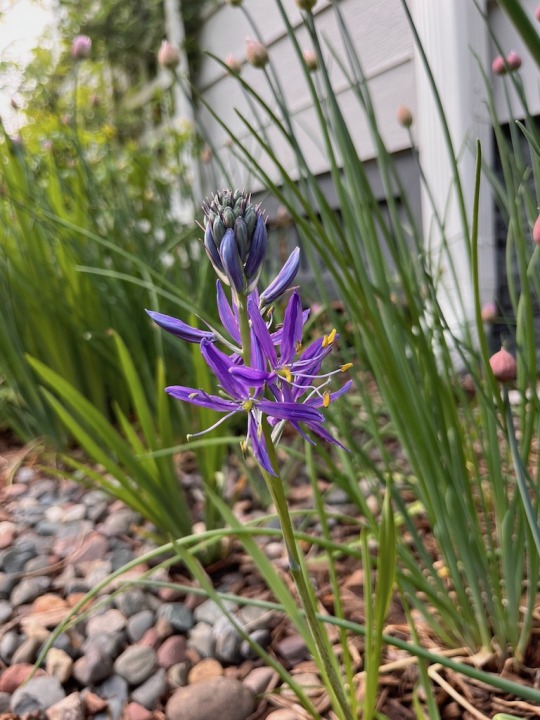


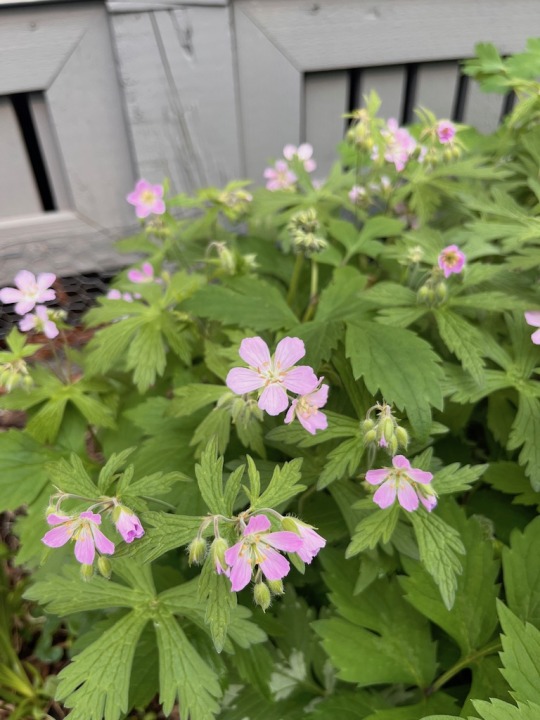
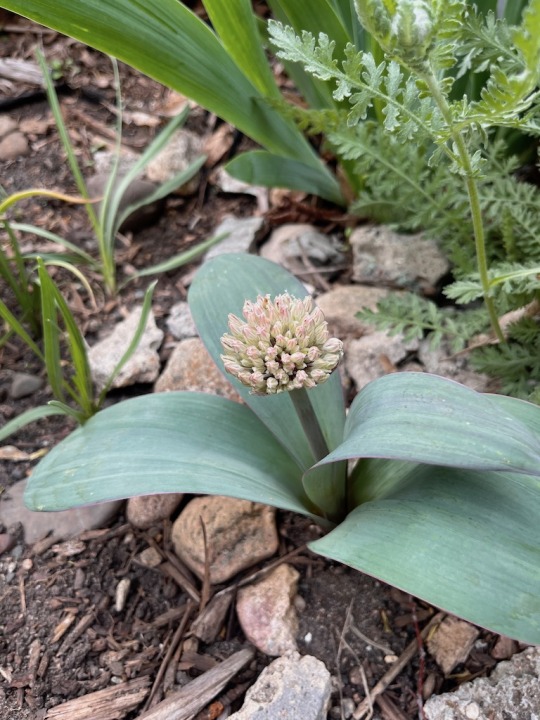
12 notes
·
View notes
Text
Plants for The Vast
Bellflowers (Campanula)
Soapwort (Saponaria)
Lupine (Lupinus)
Columbine (Aquilegia)
Yarrow (Achillea millefolium)
Delphinium (Delphinium elatum)
Lilacs (Syringa vulgaris)
Blanket flower (Gaillardia aristata)
Rocky Mountain Penstemon (Penstemon strictus)
Mountain Pansy (Viola lutea)
Mountain Laurel (Kalmia latifolia)
Garden Phlox (Phlox paniculata)
Rustyback Fern (Asplenium ceterac)
Flame Azalea (Rhododendron calendulaceum)
Bitterroot (Lewisia rediviva)
Fireweed (Chamerion angustifolium)
Piper's Bellflower (Campanula piperi)
Bloodroot (Sanguinaria canadensis)
Boltonia (Boltonia asteroids)
Alpine aster (Aster alpinus)
Dogwood tree (Cornus florida)
Brown's peony and California peony (Paeonia brownii, Paeonia californica)
Whitebark, limber, and bristlecone pine (Pinus albicaulis, Pinus flexilis, and Pinus subsection Balfourianae)
#og.txt#popculture magic#paganism#pop culture paganism#tma paganism#tma pcp#the magnus archives#tma#the vast#the falling titan
20 notes
·
View notes
Note
μάνα, can we— um— like do some i dunno gardenin’ i suppose ?? need the distraction .
— @morganinez
We can if you’d like to, right now you can help with the Wild Columbine (Aquilegia canadensis).
Do you want to tell me what’s going on?
#ooc: gotta get back into the native plant grind#pamela isley#poison ivy#dc#dc rp#dc rp blog#dc comics#ask ivy
16 notes
·
View notes
Text







mini wildflower paintings! soon to be available as stickers/seed packets harvested from my plants.
species in order:
-foxglove beardtongue (penstemon digitalis)
-eastern red columbine (aquilegia canadensis)
-new england aster (symphyotrichum novae-angliae)
-purple coneflower (echinacea purpurea)
-bee balm (monarda fistulosa)
-maypop/purple passionflower (passiflora incarnata)
-blue sage (salvia azurea)
#native plants#wildflowers#illustration#watercolor#botanical illustration#art#painting#native gardening#prairie plants#bigeelsplantposting#bigeelsart
19 notes
·
View notes
Text
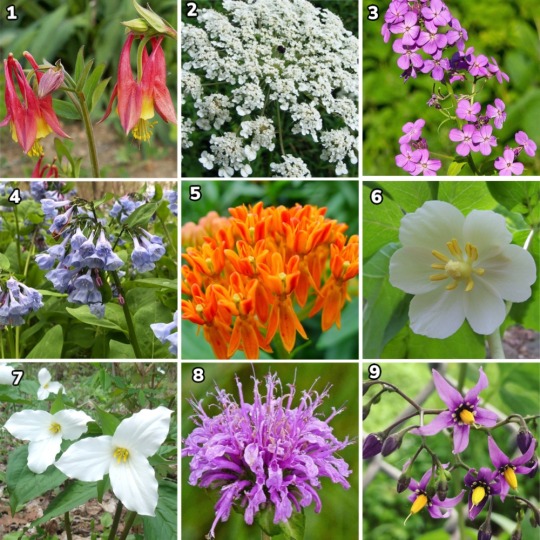
71 notes
·
View notes
Text



Eastern red columbine (Aquilegia canadensis) is now reaching peak bloom along the Highland Scenic Highway in the Monongahela National Forest. This herbaceous perennial in the buttercup (Ranunculaceae) family is prized by native wildflower gardeners as much for its delicate foliage as for its long-spurred, red and yellow flowers, which dangle and nod from rangy, arching stems. Hardy and long-lived, eastern red columbine spreads readily by self-seeding and is one of the easiest and most rewarding wildflowers to establish in a native wildflower garden.
#appalachia#vandalia#wildflowers#west virginia#spring#flora#allegheny mountains#monongahela national forest#highland scenic highway#eastern red columbine#canada columbine
45 notes
·
View notes
Note
My current list of native plants that I should plant, I have no idea if these are already on the land
Which is why I need to survey it
And see if we have any other invasive plants, currently we have: the multi flora rose, the honeysuckle, and the stupid fucking mile-a-minute vine that I’m pulling tomorrow
I can’t remove the giant fields worth of multi flora roses or the giant honeysuckle bushes right now but I can get rid of that stupid fucking vine before it takes over the damn yard
Anyways here’s the list of surprisingly a lot of edible plants and wetland plants that are native and I should plant:
Rubus odoratus — flowering raspberry
Vitis riparia — river grape or Vitis labrusca — fox grape
Rubus recurvicaulis — arching blackberry
Viburnum opulus — highbush-cranberry
Aquilegia canadensis — red columbine
Impatiens capensis — jewelweed, spotted touch-me-not
Lobelia cardinalis — cardinal-flower, red lobelia
Comarum palustre — marsh-cinquefoil, purple marsh-locks
Ranunculus caricetorum — swamp buttercup, swamp crowfoot
Symphyotrichum ciliolatum — Lindley's American-aster
Adiantum pedatum — northern maidenhair fern
Thelypteris palustris — marsh fern
Woodsia glabella — smooth cliff fern
Dryopteris campyloptera — mountain wood fern
Calla palustris — water arum, wild calla
Erythronium americanum — American trout-lily
Lilium philadelphicum — wood lily
Cypripedium acaule — pink lady's-slipper
Juniperus communis — common juniper
Prunus serotina — black cherry
Rhododendron canadense — Canada rosebay, rhodora
Rhododendron groenlandicum — Labrador-tea
Ribes hirtellum — hairy-stemmed gooseberry
Morus rubra — red mulberry
Ribes triste — swamp red currant
Gaylussacia baccata — black huckleberry
Tilia americana — American linden
Vaccinium corymbosum — highbush blueberry
Sambucus nigra — black elderberry
Aralia nudicaulis — wild sarsaparilla
Matteuccia struthiopteris — fiddlehead fern, ostrich fern
Allium tricoccum — ramps, wild leek
Looks like you've got your work laid out for you, huh?
Try not to break your back and don't get burned in the sun.
5 notes
·
View notes
Text

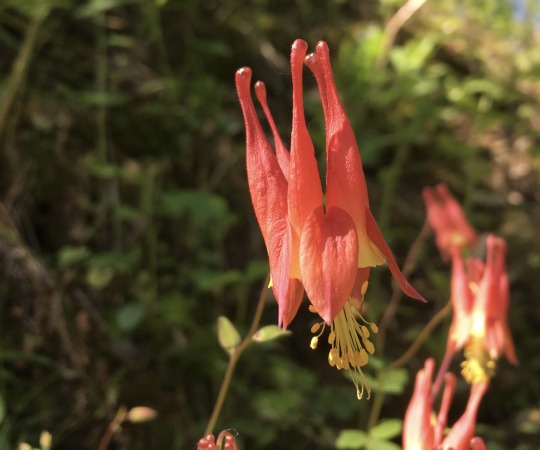
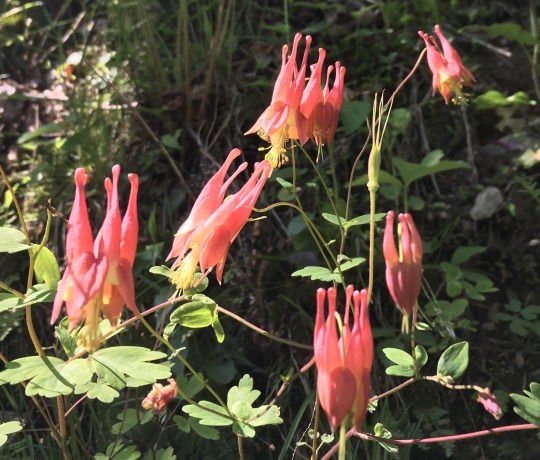
Native columbine, Aquilegia canadensis, blooming one May.
#pennsylvania#wildflowers#native wildflowers#columbine#eastern red columbine#aquilegia#aquilegia canadensis#may#springtime#spring ephemerals
244 notes
·
View notes
Note
10, 12, and 32 please!
favorite milkshake flavor?
Coffee :3
favorite flowers?
Aquilegia canadensis (Red columbine)


And the Mimulus michiganensis (Michigan monkey flower)

favorite romcom (or any romantic movie)?
I for the life of me cannot think of a romantic movie i enjoy >.> I'm sure there are some out there i watched and liked but I'm drawing a complete blank x_x
4 notes
·
View notes
Text

Aquilegia canadensis / Eastern Red Columbine at the Sarah P. Duke Gardens at Duke University in Durham, NC
#Aquilegia canadensis#Aquilegia#ranunculaceae#Eastern red Columbine#Red Columbine#Columbine#Native plants#Native flowers#Plants#Flowers#Nature photography#photographers on tumblr#Sarah P. Duke Gardens#Duke Gardens#Duke University#Durham#Durham NC#North Carolina
2 notes
·
View notes
Text
My Garden Flowers Part 6
All photos mine, unedited.





















In order of appearance:
151. Canada Ginger (Asarum canadense) Not a ginger; the root just tastes like it. Flowers are springtime only and you miss them entirely if you don't get close to the ground!
152. Ohio Spiderwort (Tradescantia ohiensis) Was able to get her by calling up one of the plant places I order from directly during the COVID years. Their usual boxsets weren't listed as available so I asked if they ever would be that year, as a repeat customer, and listed the plants of theirs that I'd like and they put it together for me! She's a morning flower only, but she's stunning.
153. Harebell (Campanula rotundifolia) One of my very first. Grassy green foliage and cute little light blue bell-shaped flowers.
154. Panicled Aster (Symphyotrichum lanceolatum) Well behaved for an aster. When she starts growing onto the sidewalk I ease her back into the bed and she stays.
155. Smallflower Columbine (Aquilegia brevistyla) You can eat these flowers too but she's not quite as profuse as her taller red cousin so I'll wait before trying one.
156. Swamp Milkweed (Asclepias incarnata) Considered much more well-behaved behaved than her cousin the common milkweed, and therefore favoured in garden settings, I find she's not nearly as fragrant, but her flowers are stunning. In spite of her name she's quite drought tolerant. And while she doesn't spread by rhizome (well-behaved), she does seed prolifically. But like her common cousin, her young pods, young shoots, and flower clusters are edible cooked!
157. Wild Bergamot (Monarda fistulosa) She moves around. Died back in the area I initially planted her but has popped up in several places nearby and considerably further away. Her dried flowerheads still smell amazing after the winter if you give them a squeeze.
158. Wild Geranium (Geranium maculata) A beautiful plant from spring to fall. Her foliage is roundy in the early spring and then she has these wonderful pink flowers against the dark green of her leaves. After the flowers are done the foliage is still interesting, and then it turns red in the fall.
159. Sweet Corn (Zea mays saccharata rugosa) Not technically native to the area and can't survive the winter, but grown here long before colonization. She makes a rather handsome garden plant in my opinion.
160. Purple Poppymallow (Callirhoe involucrata) Just a strikingly beautiful groundcover for a dry area.
161. Smooth Rose (Rosa blanda) She doesn't bloom very often and suckers very slowly, but a non-aggressive rose is exactly the sort I need for property that isn't mine.
162. Anise Hyssop (Agastache foeniculum) Beloved of the bumblebees, and I like to use her in flavouring my pies.
163. Redroot Amaranth (Amaranthus retroflexa) Not pictured as I don't have pictures yet. Not sure if she reseeded this year. I rescued her from a fallow area and she has reseeded at least once, so we'll see.
164. Purslane (Portulaca oleracea) Not pictured as I don't have pictures yet. Also one I rescued from a fallow area. I don't know why so many people don't like purslane. She's a cute succulent groundcover in my opinion, and a nice snack too.
165. Crowfoot Violet (Viola pedata bicolor) Not pictured as I don't have pictures yet.
166. Mountain Laurel (Kalmia latifolia) The only one I planted without any known food use--it's poisonous--but purely because I saw a picture in David Attenborough's The Secret Life of Plants and always wanted one.
167. Wild Chives (Allium schoenoprasum) Beautiful flowers and tasty all around. What more could one want?
168. Field Thistle (Cirsium discolor) The parent of that field thistle, which appears to be dead in both halves, sadly, though her younger siblings are still alive. Her flowers are quite lovely and I do hope to see them in the garden next year if they don't get cut too.
169. Canada Milk Vetch (Astragalus canadensis) Interesting yellow-green flowers become deceptively inviting bean-looking fruits, but those don't have a known edible use. Other parts do, though.
170. Rattlesnake Master (Eryngium yuccifolium) I can't remember if she's named as such because she was used to treat snakebites back in the day or if her flowerhead kind of looks like snake's rattle. Anyway she's interesting.
171. Compass Plant (Silphium laciniata) Not pictured because she hasn't made a flowerstalk yet. Must be young. Her relative the cup plant has been flowering reliably every year.
172. Heath Aster (Symphyotrichum ericoides) Not pictured as I haven't got any pictures yet.
173. Rough Blazing Star (Liatris aspera) A very drought-tolerant blazing star species. Not quite as showy as dense blazing star but a nice tall plant for the back of a sunny garden.
174. Blanketflower (Gaillardia xgrandiflora) A hybrid with one parent native to here and the other out west. Not sure if she's fertile or not. Got her because I needed another plant for the minimum order and she looks nice enough not to be mistaken for a weed.
175. Graceful Cinquefoil (Potentilla gracilis) Flowering in her first year in the garden! She's hopefully going to form a groundcover in a relatively short period, over which her flowerstalks will sway in the breeze.
176. Pale Purple Coneflower (Echinacea pallida) Glad I got pictures before the landlord cut her. (:
177. Wild Savoury (Clinopodium arkansana) Not pictured as I don't have pictures yet.
178. Small-Leaved Pussytoes (Antennaria parvifolia) Not pictured as she hasn't flowered yet.
179. Common Yarrow (Achillea millefolium nigrescens) Not pictured as I haven't seen any flowers yet.
180. Red Elder (Sambucus pubens) Not pictured as she hasn't flowered yet.
#blackswallowtailbutterfly#my photos#photography#my garden#garden flowers#native plant gardening#native flowers of Carolinian Canada and USA
15 notes
·
View notes
Text

20240705 Namekagon River Wisconsin
Columbine Aquilegia canadensis
0 notes